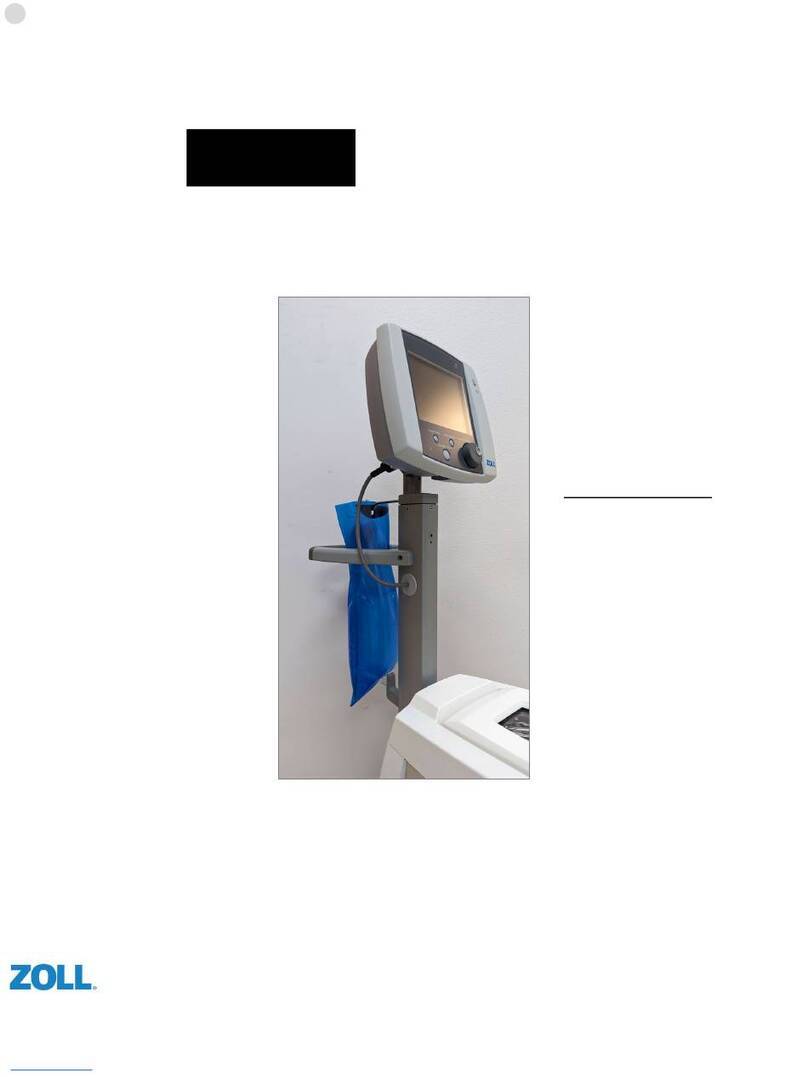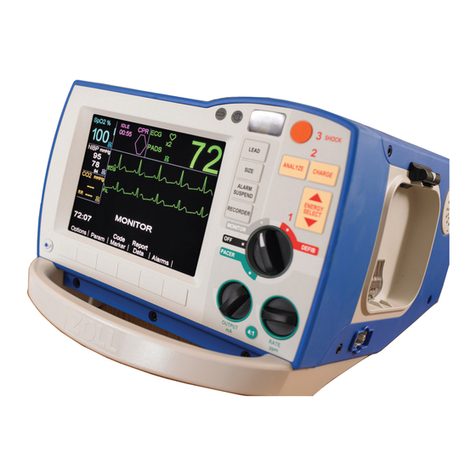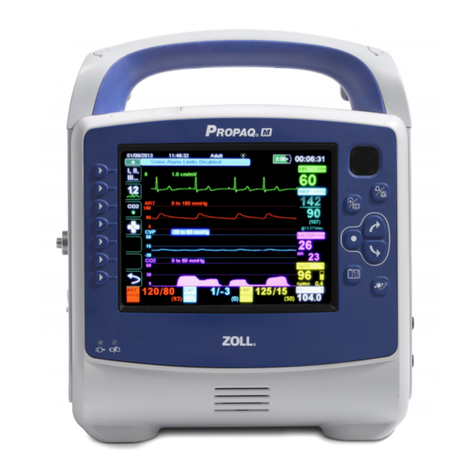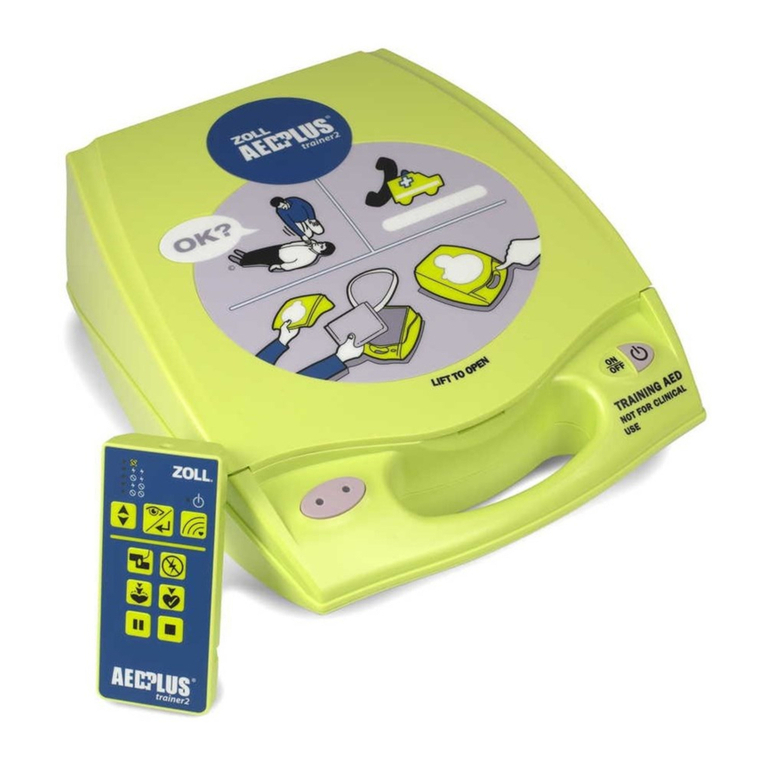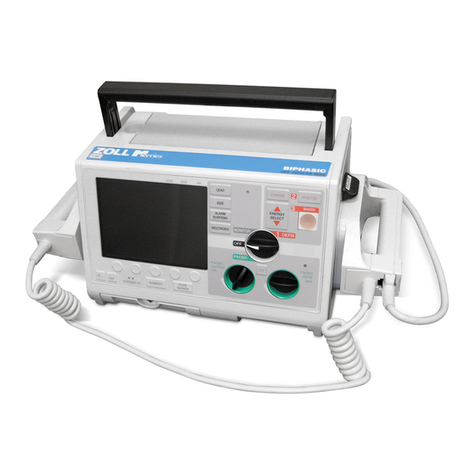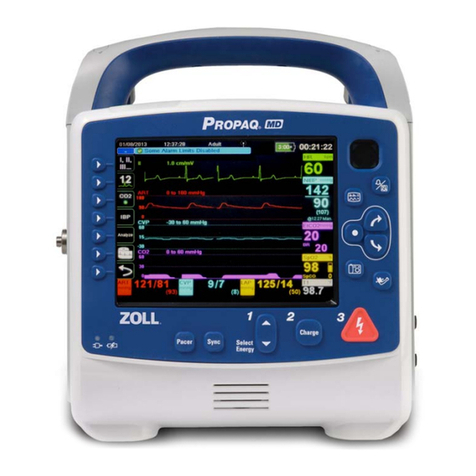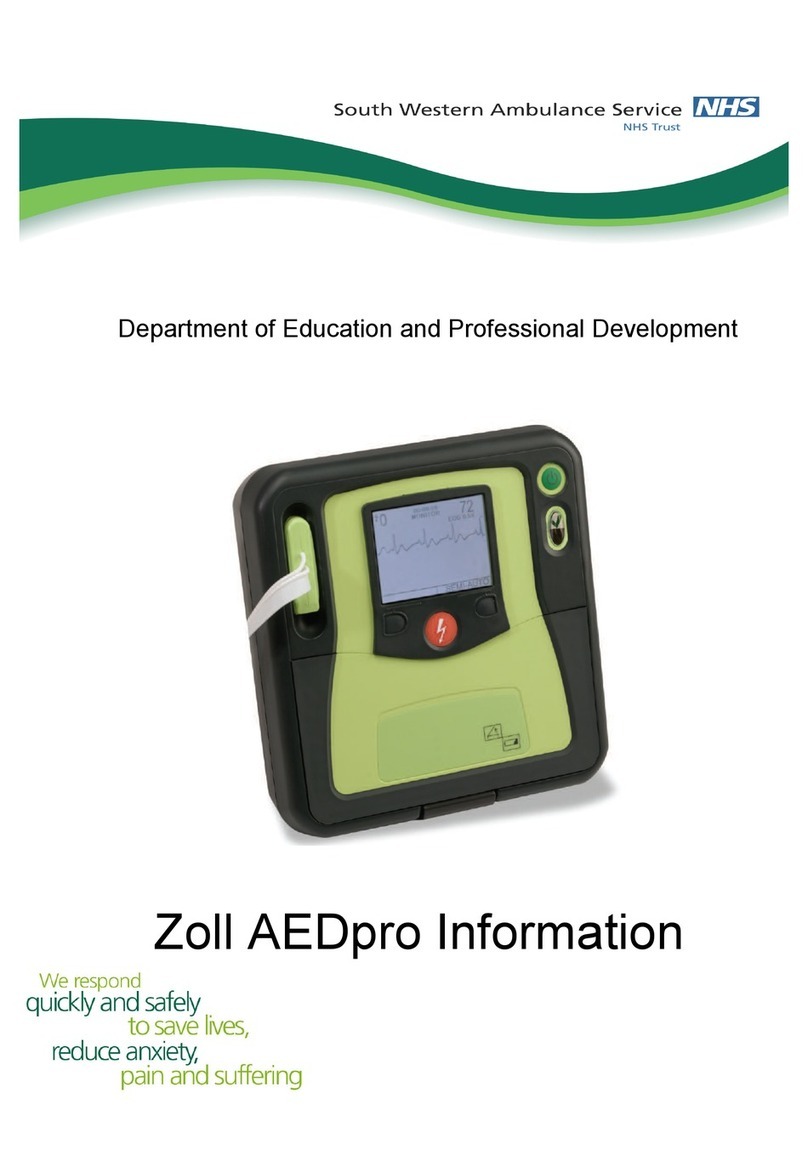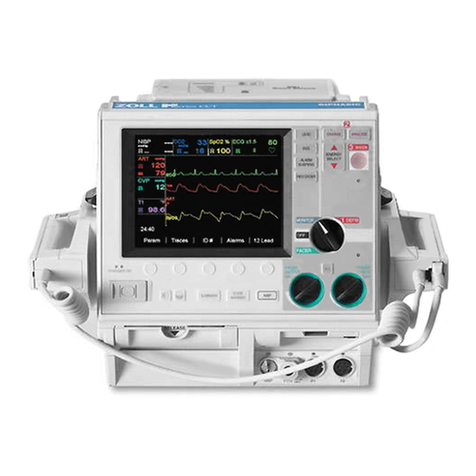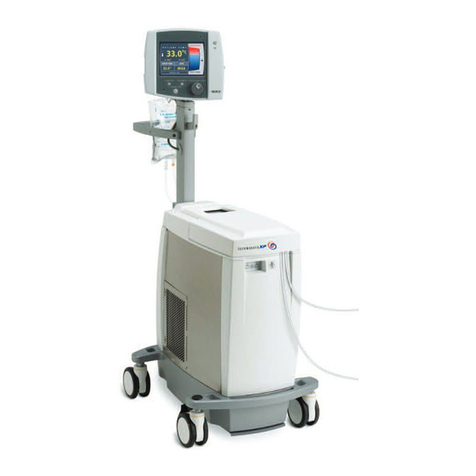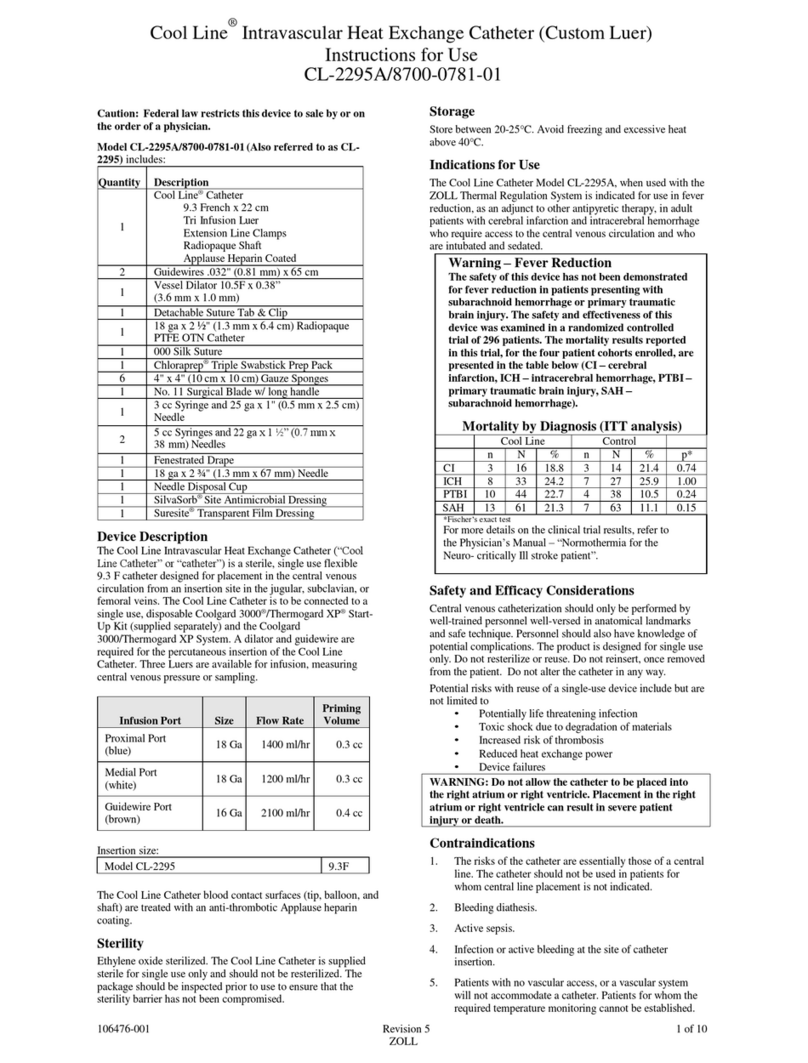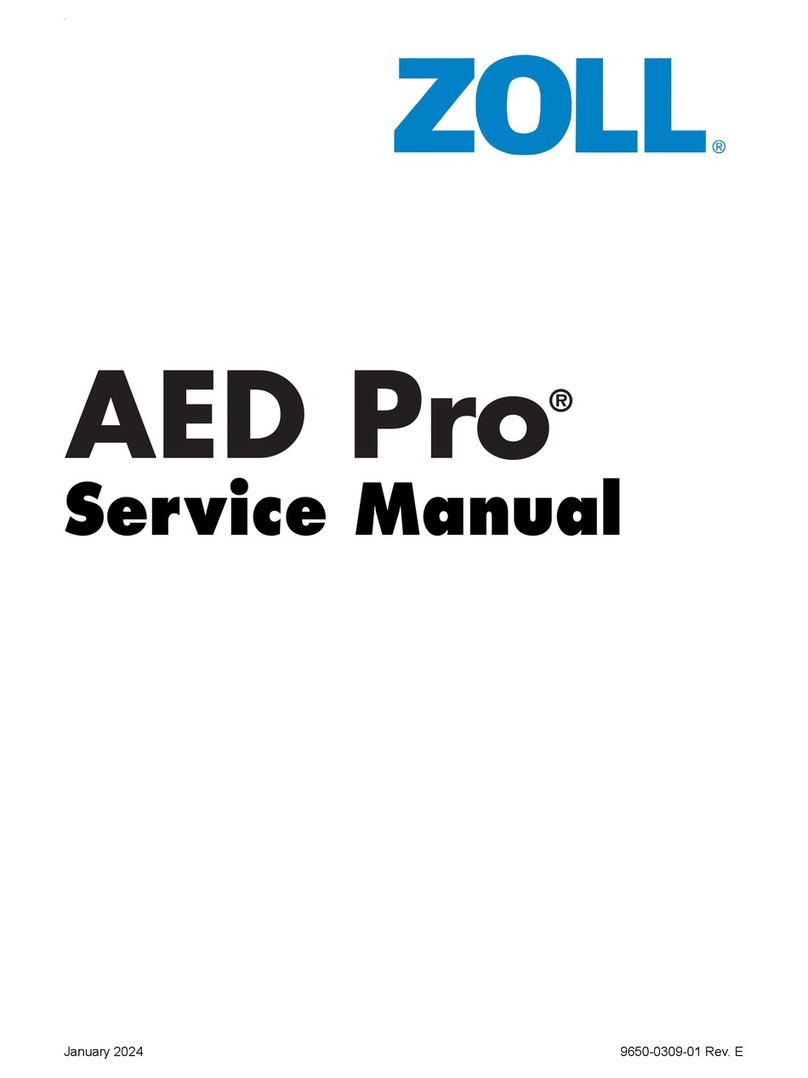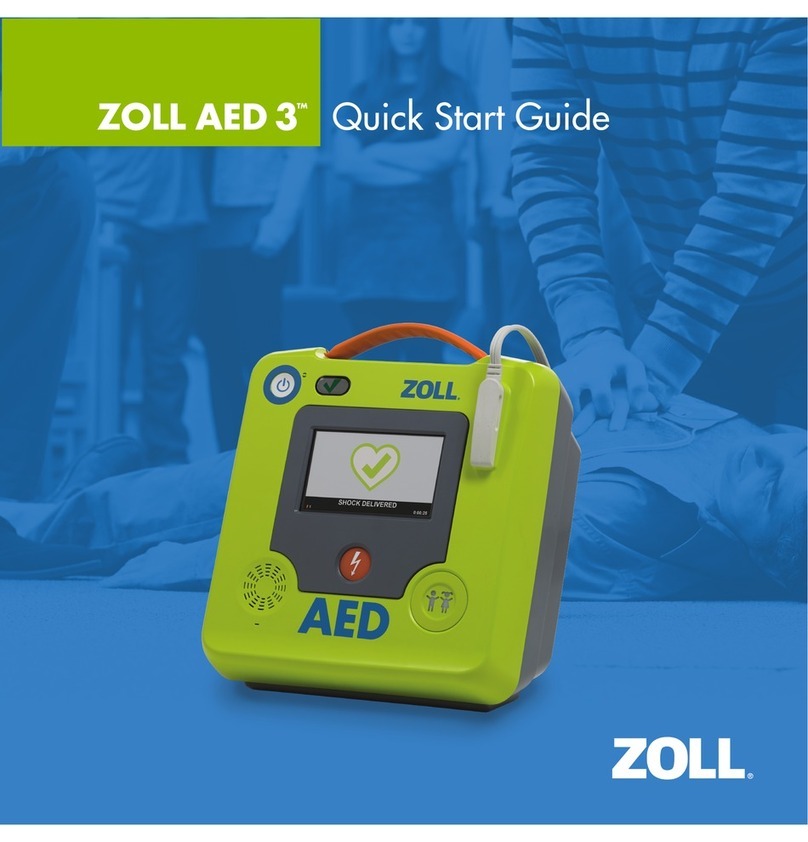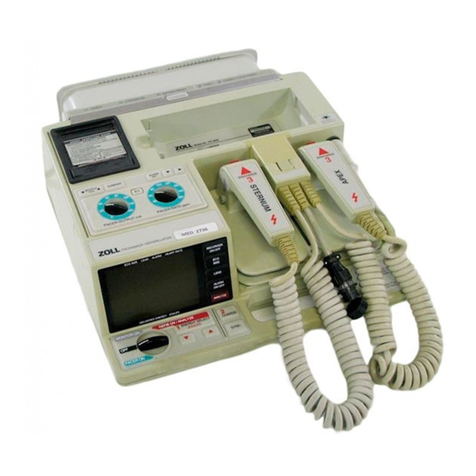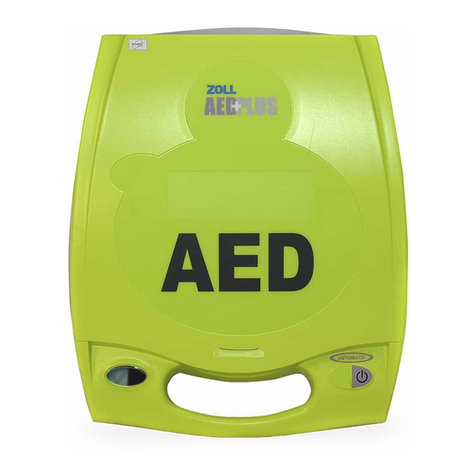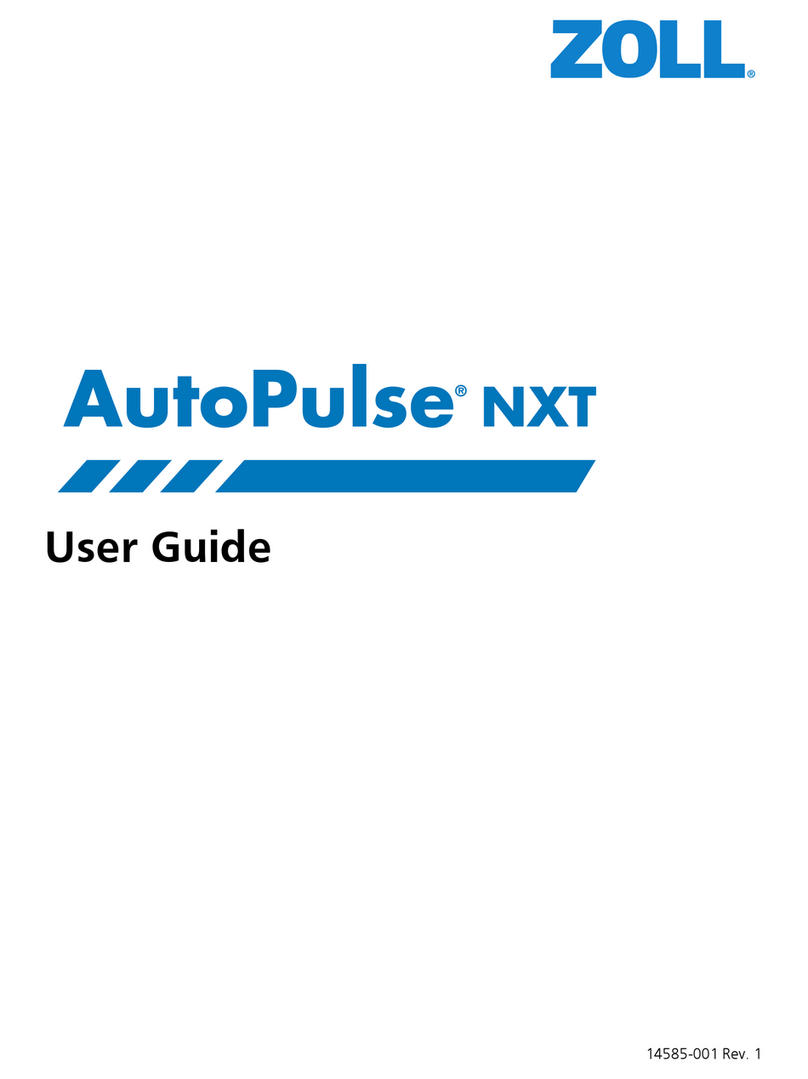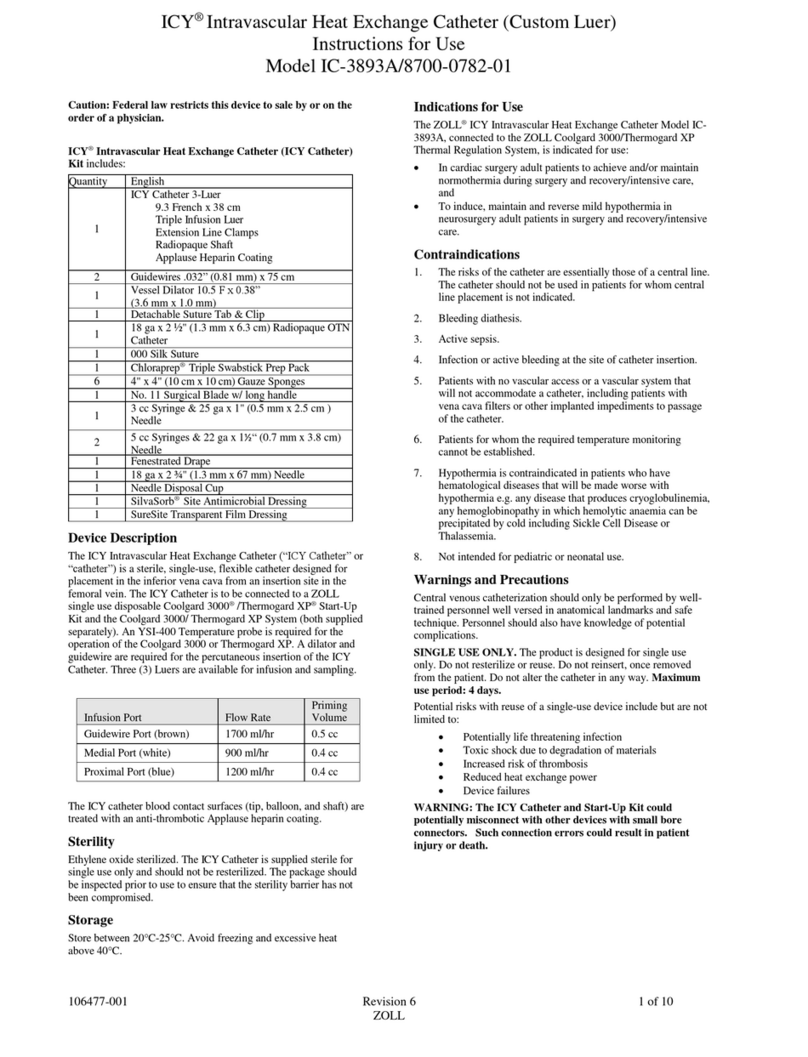
English 5
9. LIMITED WARRANTY
Subject to the terms, conditions and limitations contained herein, ZOLL Medical warrants only to the ultimate
due to defects in material or workmanship during the time period listed below. The foregoing period is sometimes
referred to as the “original warranty period.” The foregoing limited warranty does not apply to any part, portion,
or component of any product which is manufactured by a third-party (“Third-Party Component”). The time period
THE LIMITED WARRANTY SET FORTH IN THE FOREGOING PARAGRAPH, IS THE SOLE AND EXCLUSIVE
WARRANTY WITH RESPECT TO ZOLL MEDICAL’S PRODUCTS. ZOLL MEDICAL MAKES NO OTHER
EXPRESS WARRANTY OF ANY KIND OR NATURE AS TO THE PRODUCTS OR THEIR PERFORMANCE
EXCEPT FOR THOSE LIMITED WARRANTIES EXPRESSLY SET FORTH IN THE FOREGOING PARAGRAPH
AND EXCEPT THEREFORE, SPECIFICALLY DISCLAIMS ANY AND ALL REPRESENTATIONS OR
WARRANTIES OF ANY KIND OR NATURE CONCERNING THE PRODUCTS, INCLUDING, BUT NOT
LIMITED TO, ANY REPRESENTATION OR WARRANTY THAT THE PRODUCTS COMPLY WITH ANY LAW,
OR THAT ANY PARTICULAR RESULT WILL BE OBTAINED BY USING THE PRODUCTS. ZOLL MEDICAL
MAKES NO WARRANTIES WITH RESPECT TO ANY THIRD PARTY COMPONENT AND ZOLL MEDICAL
SPECIFICALLY SELLS SUCH THIRD-PARTY COMPONENTS “AS IS” WITHOUT ANY WARRANTY. FURTHER,
ZOLL MEDICAL MAKES NO IMPLIED WARRANTY OF ANY KIND OR NATURE WITH RESPECT TO ITS
PRODUCTS OR ANY THIRD-PARTY COMPONENT AND SPECIFICALLY DISCLAIMERS ANY AND ALL
IMPLIED WARRANTIES, INCLUDING, BUT NOT LIMITED TO, ANY AND ALL IMPLIED WARRANTIES OF
MERCHANTABILITY, FITNESS FOR A PARTICULAR PURPOSE, NON-INFRINGEMENT, OR COMPLIANCE
WITH ANY FEDERAL, STATE OR LOCAL LAW, RULE OR REGULATION. IN ADDITION, ZOLL MEDICAL
EXPRESSLY DISCLAIMS TO THE FULLEST EXTENT ALLOWED BY LAW, RULE OR REGULATION ANY
WARRANTY PROVIDED UNDER ANY LAW. The limited warranties set forth above shall be null and void if
with the maintenance requirements set forth in the maintenance manual for such product or otherwise provided
by ZOLL Medical, (c) any repairs are made to a product which are not authorized by ZOLL Medical in writing,
(d) any failure of a product to comply with the above limited warranty is not reported to ZOLL Medical in
manufactured, (g) a product is not operated in strict compliance with the terms and conditions set forth in any
operating manual, notice or other statement accompanying the product, (h) a product is abused or damaged, (i)
purchaser fails to deliver the product to ZOLL Medical for inspection and testing if requested by ZOLL Medical
or purchaser disposes of the product or any part or component on or before the thirtieth (30th) day after sending
a written claim under the warranty to ZOLL Medical, (j) such failure of the limited warranty results from a failure
of any third party component, or (k) a product is not stored or handled as directed in writing by ZOLL Medical.
The sole and exclusive remedy for any failure of any product to comply with the limited warranty set forth above
or any other warranty imposed upon ZOLL Medical by Law, if any, shall, at the election of ZOLL Medical, in
its sole discretion, be either (a) the repair or replacement of the product or component which failed to comply
with such warranty or (b) the refund of the purchase price of the product. Except as provided below, any repair
or replacement shall carry the same warranty as the original product but only for the remainder of the original
warranty period. Purchaser’s exclusive remedy with respect to any claim arising out of or as a result of third-party
component shall be against the third-party manufacturer. Any and all claims under the above limited warranty
fails to comply with the above limited warranty but in no event later than the expiration of the original warranty
period with respect to which the claim is being made. Any claim under the above limited warranty made after
such period for making a claim shall be null and void. After receiving written notice of the warranty claim, ZOLL
Medical shall determine whether to (a) repair or replace the product or part or (b) refund the purchase price of
the product. ZOLL Medical may require purchaser to return any Product or component thereof which purchaser
claims to be defective to ZOLL Medical at purchaser’s cost for inspection as a condition to any claim under the
above limited warranty. No product or part may be returned to ZOLL Medical without ZOLL Medical’s prior written
authorization. If a product which is returned is determined by ZOLL Medical in its sole discretion not to have
failed to comply with the limited warranty, purchaser shall pay costs of removal, repair and/or replacement for
such product. If a product that is returned is determined by ZOLL Medical in its sole discretion to have failed to
comply with the limited warranty, ZOLL Medical shall pay for all repair and/or replacement costs for such product
(or refund the purchase price if so elected by ZOLL Medical) and ZOLL Medical shall reimburse purchaser for the
reasonable costs of shipping the product or component to purchaser.
ResQPOD and ResQPUMP are registered trademarks of ZOLL Medical. These products and their use are
protected by one or more of the following patents listed at www.zoll.com/patents.
